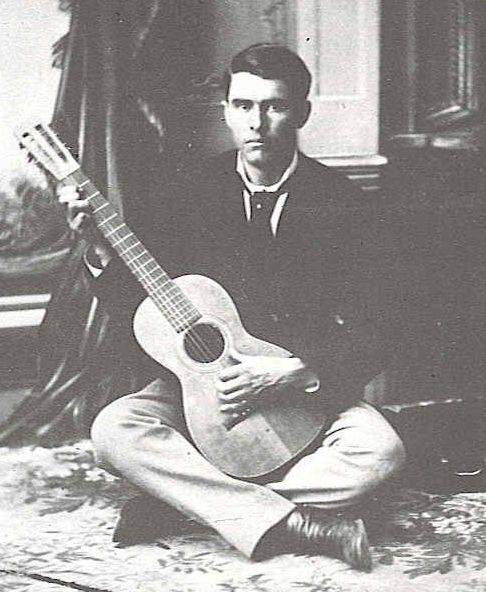|

Orville Gibson |
Once upon a time...
There was no guitar with strings terminating at a
tailpiece. Orville Gibson was the first (as far as
we know) to bring guitars into the same family as
violins, cellos etc. Gibson was producing
tailpiece guitars as early as the 1890's. But in
1919 with the hire of a physics-obsessed musician, Lloyd
Loar, the instruments became much more formidable!
"Birth of the Archtop" An ode to Orville Gibson.
Orville Gibson Wiki
The Lloyd Loar designed
Gibson L-5, introduced in 1922 was a big success.
The carved tops and backs were dish shaped, drawing on
violin technology to project sound unmatched by any
flattop. And instead of the strings pulling
up
on the soundboard, the tailpiece attachment and
one-piece bridge pushed the sound
down into the
instrument. Even those early instruments would
have not only had stronger sound but would have gotten
around the overtones generated by that era's push pin
guitars. The sound was more crisp and well
defined.
Archtops
developed a certain following...
...and became
the top choice of jazz & swing band musicians but
only after amplification had come into play.
In the acoustic only world, as flattops developed,
archtops began losing the battle for volume.
But so what, players were hooked on the
way
Archtops made sound that was crisp and well
defined...perfect for solo players and rhythm players
could play fast, crashing chords without the muddying
effect of overtones.
|